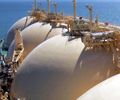
LNG demand in Japan this winter is likely to be dominated by power utilities on continued uncertainty about the fate of its nuclear plants, according to industry sources and analysts.
Demand from gas utilities is expected to be limited this year in the cold season, they added, because of slow economic recovery after the devastating March 11 earthquake.
None of the nuclear plants shut after the quake, including those idled for maintenance and those kept offline because of safety worries, are expected to come back online any time soon in the wake of the additional stress tests imposed by the government on July 7.
This means that any requirement for additional power will have to be met through other means of generation with gas seen as the popular choice.
As of Friday, 16 nuclear reactors are operating in Japan with a combined power generation capacity of 14.36 GW, which represents 29% of the country's total installed capacity of 48.96 GW over 54 reactors.
Unlike summer, which is peak season for power demand, winter sees a spike in demand for electricity as well as gas. The peak demand in summer is typically from July-September while in winter it runs from December-February.
But this winter, uncertainty over the country's post-quake economic recovery is expected to keep demand for spot LNG from gas utilities low.
Industry participants have already begun weighing options to meet the demand from power companies in winter because Japan's nuclear outages are expected to increase in the coming months, sources said.
Japanese regulations require nuclear power plants to carry out scheduled maintenance at their reactors at least once every 13 months and any that shut in the next few months are unlikely to restart soon.
Also, Japanese power utilities could see competition from South Korea for LNG amid steady demand in the North Asian country.
Hiroshi Hashimoto, a senior researcher at Tokyo-based Institute of Energy Economics, Japan, said he could not give an estimate for country's incremental city gas demand, saying the current situation was unprecedented in being "one of the most difficult times in the history of modern gas industry."
This made it tough "to make short-term projections as gas demand is affected by so many external factors."
But he did say that Japanese gas utilities are not expected to see much incremental demand for winter spot LNG cargoes beyond what has already been procured.
"I assume the city gas utility companies have secured the necessary volumes under long-term and medium-term contracts," Hashimoto said last week.
"While it is true that many existing and potential industrial and commercial gas customers want to shift to natural gas as they are asked to save electricity, it is not so easy for them to quickly cope with this demand by installing necessary infrastructure and appliances," he explained.
Demand will be lower, because "if there is a significant restriction in electricity usage, there may be a slowdown in economic activities and consequently in gas usage as well," Hashimoto said.
"As an economic recovery is expected only after summer, city gas sales are not expected to grow much in the year," he added.
SPOT LNG OUTLOOK FOR WINTER
As the Platts Japan Korea Marker continued its climb to record levels last week, news that gas utilities may not need LNG spot cargoes may come as a welcome respite for Japanese power companies, already competing with rising demand from South Korea.
Tony Regan, a consultant from Singapore-based Tri-Zen International, said this week that at present buyers were taking September and October cargoes in readiness for peak winter LNG demand. For October and November cargoes, buyers could afford to wait, he added.
But with August about to enter its second week, opportunities to secure spot deals at bargain prices may prove elusive, as the JKM settled at $14.65/MMBtu for September delivery Thursday down from a record $14.875/MMBtu on Monday. Platts assessed SW Europe for September delivery at $10.60/MMBtu Thursday.
In the first half of 2011, there was a huge gap between LNG consumption by power companies and gas utilities, according to data from industry bodies.
Japanese power utilities bought 23.68 million mt of LNG in H1 2011, up 13.5% from 20.85 million mt a year ago, data from the Federation of Electric Power Companies showed. They also consumed 14.1% more LNG at 22.47 million mt in H1 compared with H1 2010.
Meanwhile, gas utility sales in H1 2011 fell 0.2% to 18.92 million cubic meters (8.7 million mt) from 18.95 million cu m a year ago, data from the Japan Gas Association showed.
Sales to industrial customers was the only city gas utility segment to show appreciable growth this year, rising 0.7% year on year over the first half of the year to 8.86 million cu m.
This can probably be explained by "some shift in economic activity from the east to the west in the first half of 2011" after the earthquake, Hashimoto said.
Source: Platts
We use cookies to improve your experience. By continuing to use our site, you accept our Cookies, Privacy Policy,Terms and Conditions. Close X